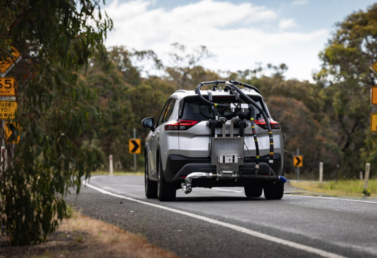Australia’s peak motoring body is calling on the Commonwealth Government to urgently improve national road safety management and coordination, after new data confirmed 1,172 people died on the nation’s roads in the past 12 months.

A year after Australian governments committed to halving road deaths through the decade to 2030, Australia’s road toll increased 4.1 per cent in the 12 months to August.
Australia’s peak motoring body is calling on the Commonwealth Government to urgently improve national road safety management and coordination, after new data confirmed 1,172 people died on the nation’s roads in the 12 months to August 31, 2022. Australian governments in 2021 endorsed a National Road Safety Strategy 2021-30 that aims to reduce fatalities by 50 per cent by 2030. It also aims to reduce ‘serious injuries’ by 30 per cent over the same period: despite Australia’s current lack of an agreed national measure of (let alone any baseline for) national serious injuries. The associated National Road Safety Action Plan is yet to be finalised.
The latest Bureau of Infrastructure and Transport Research Economics data shows deaths increasing in most states and territories, with Tasmania experiencing the largest annual increase (42.9%) followed by the Northern Territory (27.8%), Victoria (19%), and the ACT (16.7%).
AAA Managing Director, Michael Bradley, said: “Australia’s worsening road toll reflects poorly on our national approach to road safety, which lacks clarity and coordination.
“Australia is today unable to even quantify the extent of road trauma, let alone the effectiveness of interventions being deployed to reduce it,” he said. “Australia’s poor measurement, analysis and reporting of road safety performance continues to be the major impediment to evidence-based solutions and well-targeted funding.
“Unfortunately, Australia will continue to miss its trauma reduction targets until we have a national plan that’s serious about its goals, and how they’re to be achieved.”
The AAA is calling for the Commonwealth to leverage the significant land transport infrastructure funding it provides states to facilitate the timely, consistent, and open reporting of national road safety data, which will allow Australia to quantify its road safety problem, develop evidence-based responses, and evaluate their effectiveness.
Data available at: Road Deaths Australia—Monthly Bulletins (bitre.gov.au)
| Jurisdiction | 12 months to Aug 2021 | 12 months to Aug 2022 | Increase | Percentage Increase |
| National | 1,126 | 1,172 | 46 | 4.1% |
| NSW | 270 | 283 | 13 | 4.8% |
| VIC | 211 | 251 | 40 | 19% |
| QLD | 298 | 290 | -8 | -2.7% |
| SA | 97 | 82 | -15 | -15.5% |
| WA | 167 | 156 | -11 | -6.6% |
| TAS | 35 | 50 | 15 | 42.9% |
| NT | 36 | 46 | 10 | 27.8% |
| ACT | 12 | 14 | 2 | 16.7% |
AAA Media contact: [email protected]
The Australian Automobile Association is the nation’s peak motoring body, representing Australia’s state-based motoring clubs and their 8.7 million members. The AAA is an apolitical and technology-neutral advocate for federal transport policy that improves safety, affordability, and mobility.

The latest AAA Transport Affordability Index reveals transport cost rises exceeded the consumer price index not only in the September 2023 quarter but also over the 12 months to the end of September.
read more
Initial results of Australia’s first program to test vehicle real-world performance show the cars tested use up to 13% more fuel on the road than they did in lab tests reported by manufacturers.
read more
The quarterly update of the AAA’s EV Index shows the Australian new vehicle market continuing to change.
read more